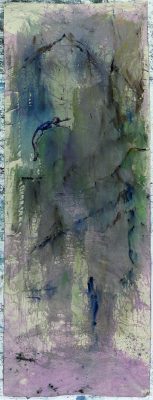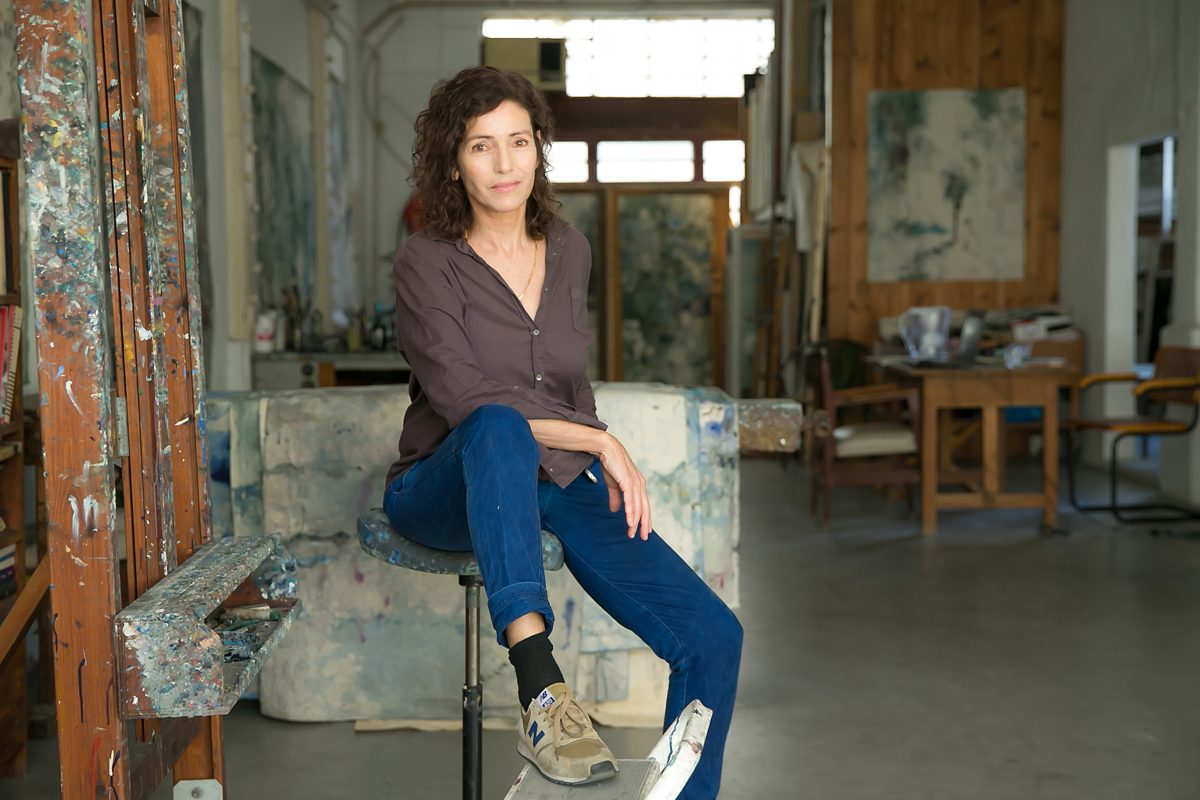Inbal Sinai
A hot summer Friday noon at the hip Noga neighborhood in Jaffa. Young couples in coffee shops, kids running around the playground at the square, all enjoying the weekend in their finest summer attire.
The chaos outside transforms into a peaceful, quiet environment as I enter Orly Maiberg’s studio, which seems to be detached from its geographical context, and unaffected by the gentrification process surrounding it.
Though confined by walls and a white metal-beamed ceiling, her studio embraces a sense of pleasant infinity. “I come here every day”, Orly says, “to research, experiment, and paint. Painting is my long lasting practice and my absolute passion” she shares.
Her creative cycle is usually a two-year process in which she continuously unfolds new mediums and subject matter for her paintings, eventually culminating in an exhibition. “It is a correlated process of discovery” she says, when I ask her what comes first – the theme of a new series or the technique she uses in order to express it. “I don’t follow a defined muse, but rather spontaneously discover my inspiration in the course of making art”.

Observing the various series’ throughout Maiberg’s long career as a painter, one can identify a somewhat poetic evolution. In her early work she used photography-based realistic paintings on canvas of anonymous human figures to investigate man’s relationship with nature. Though her object’s face is often blurred, the body is firm and its presence is the artwork’s focal point.
Her later large scale inkjet prints on paper are scanned from her ink and watercolor drawings, depicting human silhouettes in yoga positions. The human figure is still the main (and now only) object in Maiberg’s work, but it lost its firmness and had turned more abstract. Watercolor stains on the original notebook paper are preserved in the printing process, underlying the randomness and flow of this new technique.
Finally, in her latest series “Pending View”, Maiberg breaks the boundaries of the traditional white canvas as she removes it from its stretched position on the wooden frame and dips it in a bath of colors, giving it a unique texture and form that are reminiscent of Japanese paintings. She hung these works from the ceiling in the center of the studio, so they can transcend their two dimensional confines and become a full bodied installation floating in space. The works surround the viewer, allowing them to interact while slowly exploring their various angles.
The human figure is always present but here, unlike her previous series, it is not as straightforward. She told me a man who fixed the pipeline outside her studio randomly walked in one day as she was hanging one of the paintings to dry. After staring at it for a few minutes he proclaimed, “You throw a diamond in every painting”. Though he probably had no previous knowledge of Maiberg’s work, he was definitely right. The human figure in this series is a sweet discovery, almost hidden in the waves of colors and textures, invisible at first glance. When you do find it eventually, it’s exciting and feels like unearthing a precious jewel.
Another recurring motif in Maiberg’s work is water – it is always present – as a subject, technique, or texture. “The sea”, she says, “is always present in my life. I am always facing the sea. Every day. In everything I do”. And so, as I turned to leave the studio and bid farewell to Orly, I could feel the calm and tranquil flow of the nearby Mediterranean Sea.

